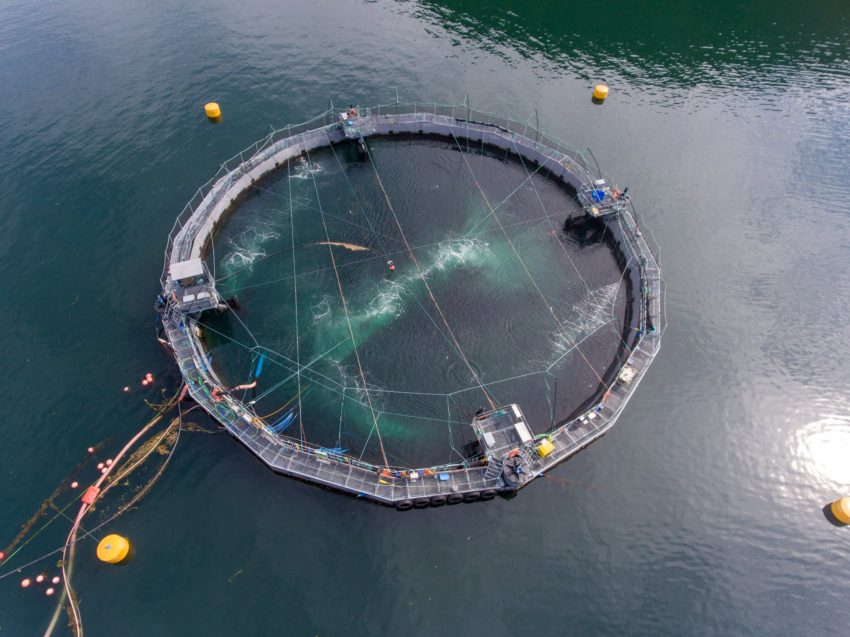A Freedom of Information request submitted to the Fisheries and Oceans Canada Federal Agency by the British Colombia marine environmental group Clayoquot Action has revealed that fish in the trial Fiizk Semi-Closed Containment System, (similar to that proposed for the fish farm at Beinn Reithe, Loch Long), died from toxic levels of ammonia.
Initially, the failed trial was reported in the aquaculture media by Cermaq Canada as a technical fault “…due to water quality issues, fish performance was affected and resulted in fish mortality.”
As Dan Lewis from Clayoquot Action puts it: “What we learned was that there were “fish welfare concerns resulting from chronic exposure to higher levels of ammonia”. In other words, those fish were forced to breath their own urine, probably burning their gills…”
Dr. John Campbell in his representation to the Loch Lomond and the Trossachs National Park Authority this week explained “The tragic event had at first been thought to be related to jellyfish exposure or an algal bloom, but following extensive investigation is now said to have resulted from exposure to ammonia, a major component of fish urine. This immediately points to insufficient replacement of the confined water volume within the impervious skirt of the semi-enclosed fish cage allowing pollutants to accumulate to levels injurious to fish health.
Semi-enclosure in contrast with open cage aquaculture incorporates a system whereby water is abstracted from depth, discharged into the confined volume of the cage and discharged via outlets in the cage base. Essentially this ensures a flow-through of water free of disease vectors, sufficiently oxygenated to maintain fish life and with discharge of soluble nitrogen and phosphorus wastes including ammonia to avoid accumulation. This event in Canada suggests flow was insufficient to avoid a condition of chronic toxicity.”
Dr. Campbell continued.. “The risk of such a condition being experienced at the Loch Long site where the fish are poisoned by their own excretions is put into perspective by comparison with open cage salmon farming. A rough calculation points to a contained volume of a single cage, one of three, being some 39,000 cubic metres with 36,000m3/hr of pumped water being discharged into the cage. Information provided by the applicant points to 50 – 100 minutes to turn over the entire enclosure volume. Taking a recent open cage salmon farm development in the Clyde for comparison and assuming a similar cage dimension and volume within the open net with a measured mean velocity of tidal and current flow of 8cm/sec clearance of the total volume would be a maximum of 10 minutes.
The precision here could be disputed but it is plain to see how the margins of safety governing contained water quality and health are pared away and once again illustrate the wider risk of taking this new design development to full scale at the location where it is proposed without a proper pilot evaluation or demonstration project.”
“The planners do not need reminding that what is being proposed here is a salmon farm of size comparable with the very largest of open cage units operating in Scottish waters. On paper semi-enclosed salmon farming with collection of solid wastes offers tangible benefits when compared with open cage practices. It is however my contention that aspects of the design introduce higher degrees of risk that remain unquantified in the absence of demonstrable performance at scale. In this respect the head of Loch Long is entirely the wrong place to site such a large-scale experiment”.
Have your say (no later than Saturday 6 August, 2022).
Representations in writing from the public can be submitted to Loch Lomond and the Trossachs National Park Authority within 30 days of 8 July, 2022 (i.e. no later than Sat. 6 August, 2022) via the online comments facility or by email to planning@lochlomond-trossachs.org (or by post to Carrochan, Carrochan Road, Balloch, G83 8EG).
Representations/Comments so far submitted to National Park Authority can be viewed here.
Planning Application 2021/0357/DET – Installation of a Marine Fish Farm and associated development including shore base, slipway and pontoon and road upgrades | Beinn Reithe Loch Long.
Photo courtesy Clayoquot Action Canada.
